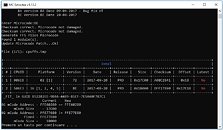- Joined
- Oct 9, 2007
- Messages
- 47,849 (7.39/day)
- Location
- Dublin, Ireland
| System Name | RBMK-1000 |
|---|---|
| Processor | AMD Ryzen 7 5700G |
| Motherboard | Gigabyte B550 AORUS Elite V2 |
| Cooling | DeepCool Gammax L240 V2 |
| Memory | 2x 16GB DDR4-3200 |
| Video Card(s) | Galax RTX 4070 Ti EX |
| Storage | Samsung 990 1TB |
| Display(s) | BenQ 1440p 60 Hz 27-inch |
| Case | Corsair Carbide 100R |
| Audio Device(s) | ASUS SupremeFX S1220A |
| Power Supply | Cooler Master MWE Gold 650W |
| Mouse | ASUS ROG Strix Impact |
| Keyboard | Gamdias Hermes E2 |
| Software | Windows 11 Pro |
One of the greatest complaints enthusiasts had with Intel's 8th generation Core "Coffee Lake" processors and their companion 300-series chipsets is their lack of compatibility with older 200-series and 100-series chipset motherboards, despite sharing an identical LGA1151 socket. Tinfoil hatters attributed this to Intel's synthetic platform-gating to ensure people buy new motherboards every two CPU generations; while Intel itself maintained that "Coffee Lake" chips have special electrical requirements that come with the increased core-counts, without explaining how that shouldn't exempt quad-core SKUs such as the Core i3-8100 and the i3-8350K from functioning on older platforms.
It turns out that "Coffee Lake" is pin-compatible with older LGA1151 motherboards based on 200-series and 100-series chipsets after all, as modders got some of these chips to work on the older platforms. Intel is using software to prevent Coffee Lake from working on older motherboards. This software comes in the form of the CPU's microcode, the iGPU's UEFI GOP driver, and certain Management Engine bootstraps on the side of the motherboard BIOS that lets it recognize the new chips. With the safe transplanting of these pieces of software, Overclock.net modders rootuser123, LittleHill, dsanke, elisw, Mov AX, and 0xDEAD; succeeding in not only getting the chips to work on older platforms, but also found ways to iron out several stability and compatibility issues. They've published a guide at this page.

View at TechPowerUp Main Site
It turns out that "Coffee Lake" is pin-compatible with older LGA1151 motherboards based on 200-series and 100-series chipsets after all, as modders got some of these chips to work on the older platforms. Intel is using software to prevent Coffee Lake from working on older motherboards. This software comes in the form of the CPU's microcode, the iGPU's UEFI GOP driver, and certain Management Engine bootstraps on the side of the motherboard BIOS that lets it recognize the new chips. With the safe transplanting of these pieces of software, Overclock.net modders rootuser123, LittleHill, dsanke, elisw, Mov AX, and 0xDEAD; succeeding in not only getting the chips to work on older platforms, but also found ways to iron out several stability and compatibility issues. They've published a guide at this page.

View at TechPowerUp Main Site






